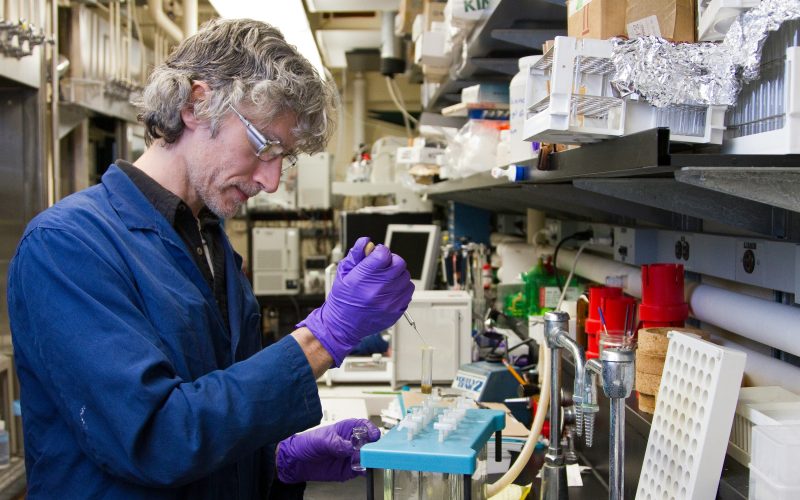Introduction
Effective clinical research is never the result of one person’s effort. It is the outcome of a carefully coordinated, highly structured partnership. At the heart of this collaboration are two essential roles: the Principal Investigator (PI) and the Clinical Research Coordinator (CRC). Their teamwork drives every study forward, shaping data quality, participant safety, operational efficiency, and regulatory compliance.
According to insights on teamwork between principal investigators and coordinators, both positions are interdependent and must function in harmony to ensure a clinical trial’s success. While the PI holds ultimate responsibility for the study, the CRC executes the day-to-day operations that bring the research to life. Understanding how these two roles collaborate can help research sites strengthen performance, avoid delays, and maintain compliance across all phases of a study.
This article explores their responsibilities, how they complement each other, and how research sites can build stronger PI-CRC partnerships for successful trials.
Why the PI–CRC Partnership Matters
The relationship between the PI and CRC is the center of site functionality. When this partnership is strong:
- Study tasks are completed on time
- Participants are managed safely and ethically
- Data is accurate and fully compliant
- Sponsors gain confidence in the site
- Clinical trials run smoothly from activation to closeout
When the partnership is weak, the opposite occurs, protocol deviations rise, enrollment suffers, and sites struggle with quality issues.
A thriving research site treats the PI and CRC as collaborative units, not separate components.
The Principal Investigator’s Role in the Partnership
The PI provides leadership, oversight, and scientific direction for the study. Their responsibilities shape the foundation for the CRC’s work.
1. Protocol Leadership and Study Oversight
The PI is responsible for:
- Understanding the protocol in depth
- Assessing feasibility before site selection
- Ensuring clinical and operational requirements can be met
- Making final decisions on participant eligibility
This leadership ensures the CRC has the guidance it needs to execute procedures correctly.
2. Participant Safety and Ethical Conduct
The PI is accountable for the safety and rights of all study participants. This includes:
- Reviewing adverse events
- Ensuring appropriate medical care
- Evaluating risk-benefit balance
- Upholding ethical guidelines such as ICH-GCP
While coordinators collect safety data, the PI interprets and responds to it medically.
3. Regulatory Responsibility
The PI signs key documents, such as Form FDA 1572, which legally binds them to trial oversight. They:
- Ensure IRB submissions are accurate
- Approve delegation logs
- Supervise the safeguarding of essential documents
The CRC often prepares these items, but the PI validates them.
4. High-Level Communication With Sponsors and Monitors
The PI:
- Attends investigator meetings
- Engages in high-level medical discussions
- Addresses complex queries from monitors or sponsors
Their insight reassures sponsors that the study is in expert hands.
The Clinical Research Coordinator’s Role in the Partnership
If the PI is the strategist, the CRC is the engine that keeps the study running day to day. They translate the PI’s direction into practical action.
1. Daily Study Management
CRC responsibilities typically include:
- Scheduling participant visits
- Conducting screening and follow-up procedures
- Collecting and entering data
- Preparing source documents
- Maintaining study supplies
A CRC’s ability to manage details directly influences the study’s success.
2. Participant Coordination and Communication
CRCs serve as the main contact for study volunteers. They handle:
- Visit reminders
- Consent form discussions (with PI oversight)
- Follow-up calls
- Retention support
This close contact ensures participants feel supported, heard, and valued.
3. Data Quality and Documentation
CRCs:
- Complete case report forms
- Track queries
- Ensure source data is accurate and verifiable
- Maintain regulatory binders
While the PI reviews and signs off, the CRC ensures meticulous data collection.
4. Operational and Logistical Efficiency
CRCs:
- Coordinate with labs, pharmacies, and other departments
- Prepare for site initiation visits
- Support monitoring visits
- Keep the PI informed of issues
Their organizational skills keep the study compliant and on track.
How PIs and CRCs Complement Each Other
Their partnership is built on shared responsibilities and coordinated actions.
1. Decision-Making vs. Execution
- PI: Makes final clinical and scientific decisions
- CRC: Executes those decisions within the protocol framework
Both roles rely on each other’s expertise.
2. Oversight vs. Operations
- PI: Ensures regulatory, ethical, and medical oversight
- CRC: Manages operational tasks that uphold these standards
The PI’s oversight is only effective when the CRC’s operations are strong.
3. Communication Flow
A successful site has constant, clear communication between PI and CRC regarding:
- Eligibility questions
- Adverse events
- Visit deviations
- Recruitment challenges
- Protocol changes
Sites that establish structured communication experience fewer errors.
4. Problem-Solving Collaboration
When issues arise, missed windows, data queries, participant concerns—the PI and CRC work together to:
- Identify the root cause
- Develop corrective actions
- Maintain compliance
- Prevent future occurrences
This strengthens site credibility and sponsor relationships.
Also Read: How Clinical Trials Can Benefit From Cross-Industry Collaboration
Building Stronger PI–CRC Collaboration
1. Start With Clear Roles and Delegation
Every study must have a detailed delegation of duties log. This promotes accountability and ensures each task has a responsible owner.
The PI must conduct delegation personally—not rely on staff to assign tasks.
2. Hold Regular PI–CRC Meetings
Weekly or biweekly meetings help maintain clarity on:
- Current study progress
- Protocol challenges
- Upcoming participant visits
- Monitoring visit preparation
- Urgent tasks or deadlines
This consistent touchpoint reduces miscommunication and improves study flow.
3. Train and Cross-Train Both Roles
A CRC should understand the medical aspects of the protocol, and the PI should understand day-to-day site operations. This cross-knowledge enhances mutual respect and collaborative spirit.
4. Foster a Culture of Open Communication
Sites should encourage CRCs to raise concerns early. PIs must be approachable and engaged. When communication barriers disappear, site quality improves dramatically.
5. Recognize Each Other’s Strengths
PI strengths often include:
- Medical expertise
- Risk assessment
- Clinical judgment
CRC strengths often include:
- Organization
- Rapport building
- Detailed documentation
Together, these strengths create a balanced, high-functioning study team.
Common Challenges and How to Overcome Them
1. Time Constraints for Busy PIs
Solution:
- Scheduled check-ins
- CRC-prepared summaries to maximize PI time
- Clear delegation structure
2. CRC Workload Overload
Solution:
- Adequate staffing
- Clear workflow systems
- Technology tools for scheduling and data entry
3. Miscommunication
Solution:
- Standard operating procedures (SOPs)
- Consistent documentation practices
- Transparent communication channels
4. Inconsistent Expectations
Solution:
- Clear study kickoff meetings
- Defined processes and responsibilities
- Shared goals for recruitment and retention
Conclusion
The partnership between Principal Investigators and Clinical Research Coordinators is one of the most important relationships in clinical research. When both roles operate in sync, studies run efficiently, participants feel supported, and data quality remains exceptional. Strong collaboration is not only beneficial; it is essential for successful clinical trials.
To strengthen this partnership further and build the skills needed for high-performing research teams, you can get training programs at the CSRS Academy.










